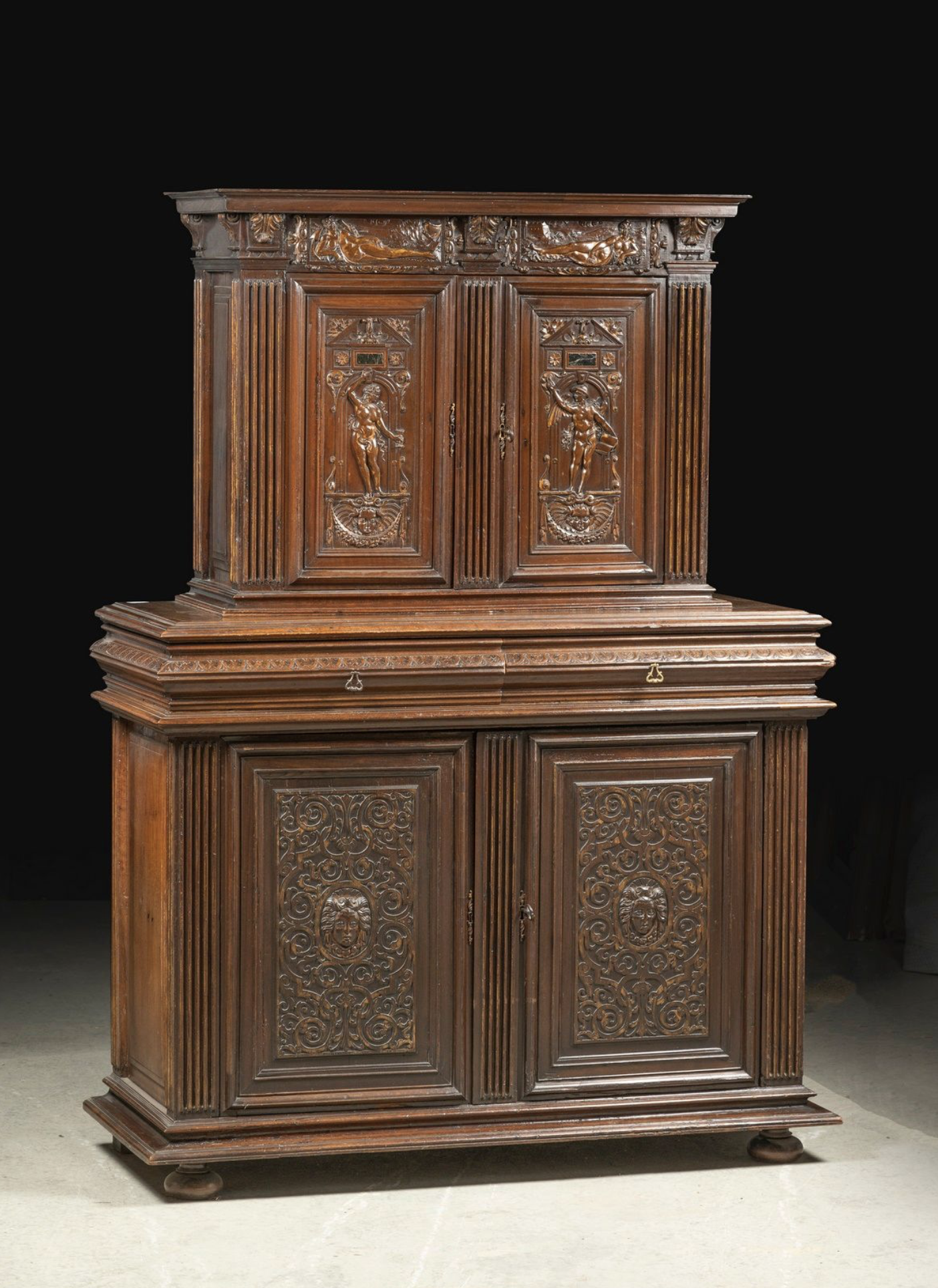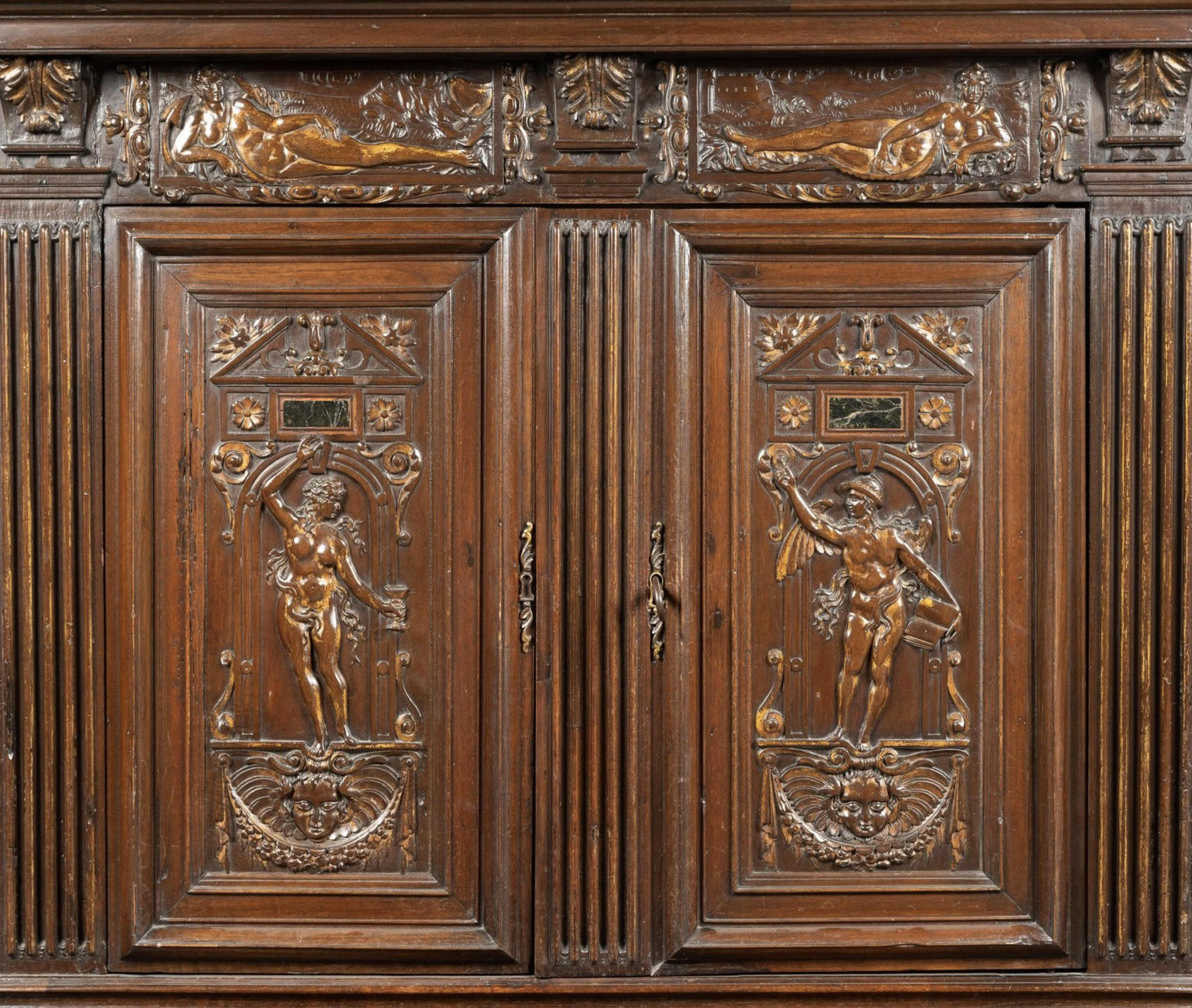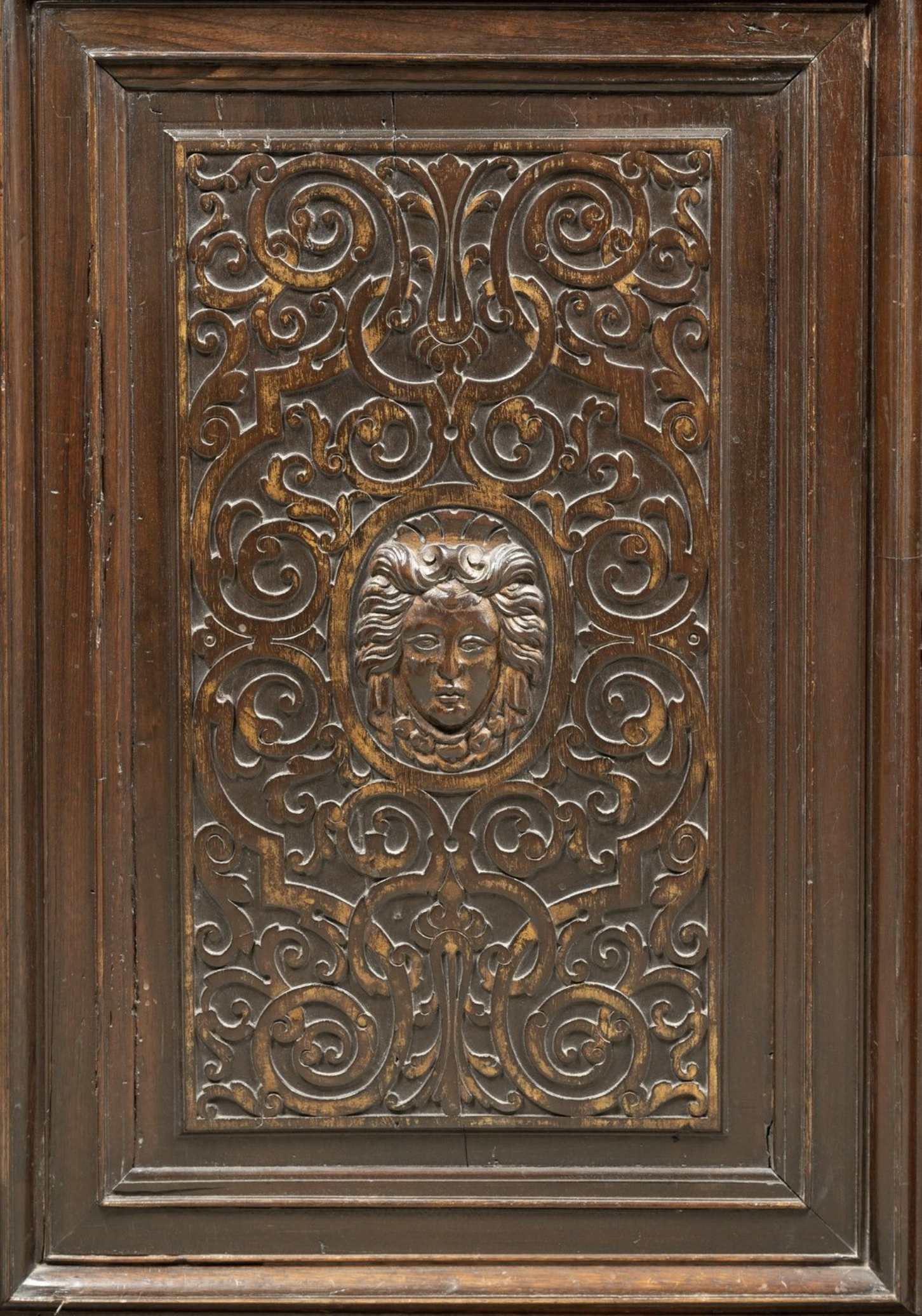Description
With a rigorous composition and well proportioned, this cabinet reflects the influence of architecture on the art of furniture in the second half of the 16th century.
The two bodies of this cabinet are thus punctuated by the presence of three fluted pilasters sculpted on the side uprights and the frames. It opens with four leaves and two belt drawers. The originality of this piece of furniture lies in the variety of motifs used in its ornamentation.
On the leaves of the lower body unfolds around two female masks a fantastic decoration of very skilfully worked vermiculations. They bloom symmetrically and intertwine with beautiful Burgundy cabbages.
In the belt, there are two drawers molded and soberly decorated with a frieze of palm-leafs.
The panels of the upper body are decorated with niches whose base is carved with the heads of winged cherubs, surmounted by an entablature inlaid with a marble tablet, flowers and an interrupted triangular pediment. Under these niches are represented two characters of high quality.
On the left, a female figure holds a chalice in her left hand. This is Aphrodite.
On the right, a man holds a book in his left hand. Two wings unfold behind his back and he wears the petasus on his head. These different attributes allow us to identify Hermes.
On the entablature of the piece of furniture, two cartouches, separated by brackets decorated with palm-leafs, are sculpted with female representations.
This beautiful Renaissance cabinet is an example of the virtuosity of the Lyon workshops around 1560-1580. The graphic decoration of vermiculation, resulting from the research of illustrators and engravers, combined with a perfectly architectural structure, thanks in particular to the use of fluted pilasters, are characteristic of this region.
Using original technical and ornamental processes, such as vermiculation, the most original and typical decoration of Lyon, they gave their creations a real identity.
The decoration of the upper body, on the other hand, suggests a Bellifontaine influence. These figures of deities were indeed very popular with artists from this region who took their inspiration from the decorations of the great royal construction sites such as the Château de Fontainebleau. These models then spread throughout France and Europe through engravings and collections of models.



